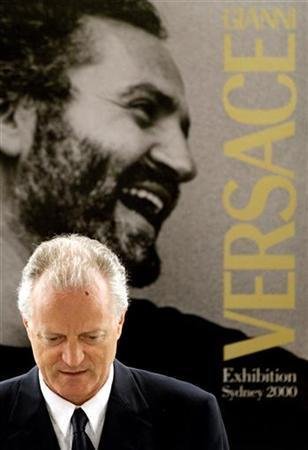Reuters
Mar 7, 2010
Gianni Versace, a life lived as a 90s fashion icon
Reuters
Mar 7, 2010
By Nick Olivari
NEW YORK (Reuters Life!) - Italian designer Gianni Versace was shot dead in Miami in 1997 at the height of his creative prowess, marking not just the high water mark for his fashion house but also the celebrity culture he helped create.

"House of Versace: The Untold Story of Genius, Murder, and Survival," by Deborah Ball tells the story of how Gianni, with his flamboyant sister Donatella as muse, not only became the cutting edge of 90s fashion but symbolized the era.
"The 90s saw globalization, the Internet, huge wealth creation and the media was hungry for more things to cover," said Ball, 41, by telephone from Zurich. Gianni "was able to tap all of this, all at the same time."
The 320-page book begins with Gianni's rise from humble beginnings to events 10 years after his murder at 50 walking back from a local coffee shop.
Along the way, the book provides compelling insight into the economic and lifestyle excesses of the 90s, the luxury goods industry and the big business aspect of fashion.
Under Gianni Versace's rule class and style went from subdued to glitz and glamour. Celebrity was key and luminaries included Britain's Princess Diana.
But the story Ball weaves, of the family dynasty where Gianni Versace could be creative because his brother, Santo, took care of the business decisions, is about a man who saw the changing future of women's dress.
"His taste appealed to the baby boomer's daughter," said Ball
Versace, a homosexual, also recognized branding early and put his stamp not just on clothes but perfumes, cosmetics, watches and home furnishings.
His rise was possible in part because cheaper air travel allowed American and Japanese shoppers to access Europe while American Vogue, which had typically focused on American designers, was giving European houses much more coverage.
And the Internet was adding to coverage by traditional media of runway shows in New York, Paris, Milan and London at the same time as countries like South Korea, Russia and Brazil were enjoying sharp gains in national income, Ball said.
Versace's knack for making celebrities out of models such as Naomi Campbell, Christy Turlington, Linda Evangelista and Cindy Crawford only added to the allure.
His death at the hands of a serial killer is central to the book but also opens a new dramatic phase. Unexpectedly, Versace left his half of the $2 billion empire to his 11 year-old niece and Donatella's daughter, Allegra, allowing his sister to take creative and business control.
Donatella, who typically handled the stars and celebrities, had her own personal problems to deal with, while the familial infighting with Santos didn't help the firm's transition.
Ball's reporting background shows in the attention to details from the 220 interviews with the family's friends, rivals and clients. Ball explains clearly how it was not just Gianni Versace's death that created problems for the fashion house but how the culture he created was used against them.
Economic downturns and savvy stylists forced fashion houses to pay celebrities to sit at their shows. The famous were offered clothes with no guarantee they would be worn in public.
Simultaneously, big business became more and more a part of the fashion culture. Large companies with multiple luxury brands got bigger discounts in fashion magazines, reducing the visibility of smaller rivals like Versace.
Versace sales dropped after Gianni's death and though a series of business managers stemmed some of the declines and Donatella overcame her addictions, the firm still struggles.
Ball makes no prophecies on what will become of Versace as Allegra takes control of the company alongside her mother and uncle.
Donatella "may be out of touch with consumers," Ball said, noting Versace fashions are a harder sell in a tough economy. And "the big mystery is what Allegra wants for the company."
(Reporting by Nick Olivari; Editing by Patricia Reaney)
© Thomson Reuters 2024 All rights reserved.

























